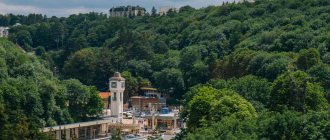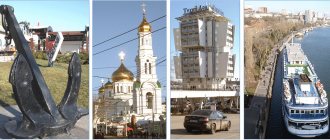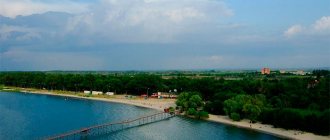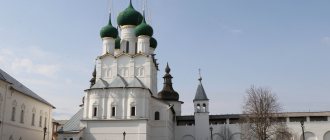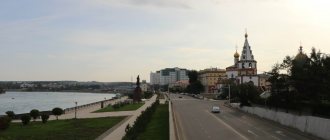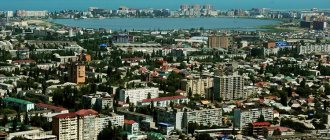Countries > Russia
Suzdal is an ancient city, first mentioned in chronicles back in 1024. Once upon a time it was the capital of the large Rostov-Suzdal principality, a trade, economic and spiritual center. However, a decline began in the 19th century, and now it is a quiet small town with a high concentration of interesting and historical places. Unique examples of ancient Russian architecture and art, important monuments and an unusual appearance have been preserved here.
- Attractions
- Observation deck
- Museums
- Excursions
- Suzdal map
List of places
Suzdal Kremlin
The main point of attraction in the city is the ancient Kremlin complex, founded in the 10th century. It was rebuilt more than once, in particular after it was burned by the Mongol-Tatars, but even now you can get an idea of its original appearance.
There are many important architectural and cultural monuments on the territory of the Kremlin, and you can learn more about their history at the Museum of Local Lore. In addition to the main exhibition, temporary exhibitions are regularly held in other buildings.
Kremlevskaya st., 20
Time: 09:00-19:00
Entrance: 400 rubles, discounts available
Cathedral of the Nativity of the Virgin Mary
The main cathedral, the Nativity of the Virgin Mary, is immediately visible from the bright blue domes with stars. This is a unique example of pre-Mongol architecture - not many monuments from those times have survived to this day. You should definitely go inside, because its interior is richly painted with frescoes from the 13th century.
Bishops' Chambers
The Kremlin chambers performed administrative and residential functions. The two-story complex of buildings dates back to the 17th century; the monastery servants and the archbishop lived in them. The largest chamber, the Krestovaya, used to receive high-ranking guests.
Wiki/Commons
Cathedral bell tower
The bell tower, restored after the fires, used to be the tallest building in the city, now giving way to the Venerable Bell Tower. It is worth paying attention to the clock - it has been preserved from the 17th century.
Kremlevskaya street
The street of the same name leads to the Kremlin, and this is one of the most comfortable places in the city. On both sides there will be small houses selling souvenirs, baked goods and hidden small cafes. To the right, near the Kremlin walls, there will be a picturesque garden on the banks of the Kamenka River, where you can take beautiful photographs and relax.
Assumption Church
Not far from the Kremlin is the only building in Suzdal in the Naryshkin Baroque style - atypically bright and richly decorated with platbands and pilasters. Unfortunately, during the anti-church campaign of the Soviet years, other buildings of the Assumption Cathedral complex were demolished - the bell tower and the chapel.
Kremlevskaya st., 8
Free admission
Kremlin Val
On the right is a large shaft, which has become a kind of observation point. If you climb the steep shaft, it will offer a view of the Kamenka River.
The ramparts have been preserved from the times when they served the defensive function of the Kremlin. It is known that the shaft has a wooden structure inside and is covered with clay on the outside.
Alexander Monastery
The monastery was named after Alexander Nevsky, who, according to legend, founded it. Over its long history, the monastery was captured more than once, and all historical buildings were burned by the Poles. The current buildings date back to the 17th century, the main one being the Ascension Church with a bell tower. This is an outstanding example of the Old Russian architectural style, especially notable is the octagonal hipped bell tower.
st. Gasteva, 15
Free admission
Vasilyevskaya street
If you come by bus, then on the way from the bus station to the center, you will most likely pass along Vasilyevskaya Street. On it you will meet the Vasilievsky Monastery and the beautiful wooden houses for which Suzdal is famous. Bright facades and decor with carved platbands are found here quite often. On the left there are views of fields where horses often graze, so the street itself is quite picturesque in the warm season.
Vasilyevsky Monastery
The monastery, located at the entrance, was originally used for defense and consisted of defensive fortifications. Since the first buildings were wooden, buildings from the 17th century have reached us, among them the Church of St. Basil the Great and Sretensky. Like other religious buildings, the monastery closed during the Soviet era and was used for warehouses. Now it is active.
Vasilyevskaya st., 32
Free admission
Shopping arcades
Gostiny Dvor - or Trading Rows - was built two centuries ago for merchant shops and shops. The one-story gallery with expressive arches is still used for its intended purpose. The simple but elegant classical design of the rows is characteristic of many other cities of the Golden Ring, including Kostroma and Rostov Veliky. In front of the rows, locals often sell homemade preparations and souvenirs, and cucumber jam is especially popular among tourists.
Fire Tower
The tower with a fire station was built according to a design that is found in Kostroma and Uglich. This is one of the rare examples of surviving civil historical buildings. The fire tower was used for its intended purpose for a century and a half, so now the building remains simply an architectural monument.
Lebedeva, 1
Resurrection Church
The Torgovaya Square complex is not limited to Gostiny Dvor. Opposite it there are two temples: cold and warm - for winter and for summer. Voskresenskaya - cold - has a modest architecture, but is notable for its high spire on the bell tower.
Kazan Church
The neighboring warm Kazan Church is more eclectic, but at the same time harmoniously complements the composition of the square.
Church of Elijah the Prophet
Not far from the Kremlin, further along the Kamenka River, the bright Ilinskaya Church is noticeable. It stands on a small hill called Ivanova Gora. It is a good example of a one-domed posad temple.
Lazarus Church
Another pair of cold and warm churches is Lazarevskaya and Antipievskaya. The Lazarevskaya five-domed church, decorated with tiles and kokoshniks, was mentioned in the charter of Ivan III in the 15th century, but the modern building was built later. Antipievskaya - cold - was created three centuries later, and its facade is decorated with rustication.
Venerable Bell Tower
The tallest building in the city is located right here - this is the Venerable Bell Tower. Fortunately, you can climb it and see the best panorama of the center and surrounding area. In good weather, all 53 Suzdal churches will be visible.
Red Square
Entrance fee : 50-150 rubles
Museums
Bell Museum
In the Venerable Bell Tower there is a small museum of bells: while you are climbing the tower, you can look at different types of bells and read about their history. It is especially interesting to learn about how the process is being automated now, including using computer programs for bell ringing.
Museum of Wooden Architecture
Along with Vitoslavlitsy near Veliky Novgorod, this museum stores unique examples of wooden architecture. They were brought here from different places in the region, miraculously surviving from the 17th-19th centuries. Among them are residential buildings, merchant mansions, temples and chapels. The museum is also interesting because peasant life is recreated here - both through the interiors and through objects common to that life.
st. Pionerskaya, 1
Working hours: 09:00-16:00
Entrance: 400 rub.
"Suzdal Prison"
On the territory of the Spaso-Evfimievsky Monastery there is probably the most unusual museum in the city. It tells the story of the prison, which was founded in one of the buildings by decree of Catherine II. Both ordinary and famous people were imprisoned in the prison. For example, the Decembrist Fyodor Shakhovsky, who went crazy within these walls. Founders of sects, soothsayers, monks and Old Believers were often referred here. During Soviet times, political prisoners were imprisoned here, for example, Yurovsky and Field Marshal Paulus.
The museum's exhibition tells more about the fate of former prisoners, as well as the life in which they lived. It is surprising that the prison was operational from the 18th century to 1968, and only then was it converted into a museum.
Suzdal attractions photo with description
There are no high-rise buildings or large industrial enterprises in this place. The famous Soviet film The Marriage of Balzaminov was filmed here. We are looking for the unique appearance of Russia in today's review of Suzdal attractions photos with descriptions.
Suzdal photo of the city and about the city
The boundaries of the city center have remained unchanged for 300 years. The population is only around 10 thousand, who formally own 150 noteworthy objects. Back in the Soviet era, in 1974, Suzdal was awarded a high government award for preserving its landmarks. In the 12th century, the town was the center of a separate independent principality; it was destroyed many times during military conflicts, and the population died out from disease. For example, in the 17th century, only 78 households remained of the entire settlement. However, despite all the troubles, it still lives its own life, growing in number of tourists and travelers who are many times larger than the local residents. Suzdal monuments have long been on the list of world cultural heritage. You can come here at any time, regardless of the time of year.
Suzdal on the map of Russia
General impressions
Suzdal is a fairly popular destination, especially within the Golden Ring, but there are no crowds of tourists and queues for museums. On the contrary, there is silence and tranquility here, which encourages long walks and allows you to truly feel this place. Its center has retained its ancient historical appearance, which is a rarity in Russia. Here you can really imagine that you are in the 18th century.
One of the disadvantages that almost all tourists note is the prices, which are not typical for a small town. Most establishments and hotels are designed for tourists, and since Suzdal is a popular destination, prices can be compared with Moscow. It is quite difficult to find inexpensive accommodation or a cheap cafe, so it is better to stay in Vladimir or Ivanovo.
All churches of the Suzdal region
Thousands of tourists come to Suzdal every year, comprehending its history, admiring the architectural monuments, the urban environment, and leave, completely unaware that nearby, very close, there is an equally interesting world of the Suzdal land, the Suzdal region. Historically, Suzdal has never been on its own; It was no coincidence that the concept of “Suzdal land” arose, which included the entire district. In this section, in addition to the world-famous white-stone architecture monuments in Kideksha and Bogolyubovo, photographs of all rural churches are collected.
© Vladimir Sukhov, Pavel Sukhov. When using site materials, a link to www.photosuzdal.ru is strictly required.



